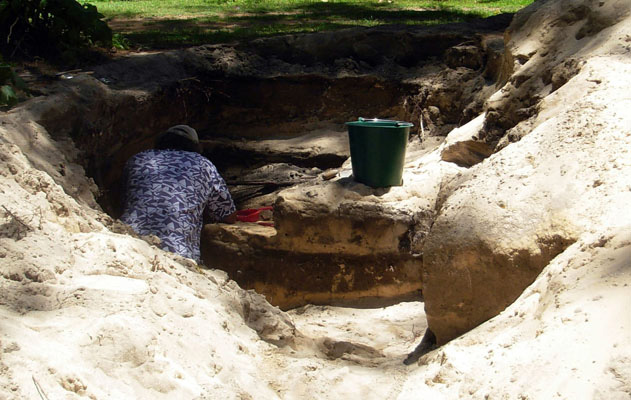Here at the bottom of the Y3 square we see the buried edge of a large fire pit that is mainy under the next square, Y2. This fire pit appears to be below the deepest layer F/G or at the very bottom of layer G that I have separated as G2. This feature is very deep in terms of the rest of the Atiahara site, the thick and densely compacted charcoal layer is resting directly on the coral hardpan (+177 below datum, datum being near to the old pre plowing surface level).
Normally one encounters the water table before getting to this depth, however the hardpan may be slightly higher here than elsewhere, (also the weather had been quite dry for the previous 2 months) In the photo below I am working in the D layer of Y3. This is the relatively clean sand layer that separates the upper cultural layer and the middle layer E, probably a storm/cyclone deposit.
Often at the interface just above layer E, the sand is visibly coarser and was often referred to as "the coarse sand layer" by the team. In this coarse sand one often encounters, heavy items such as rocks and large pahua shells, the impression is that these items have been washed out of a cultural deposit and scattered perhaps by waves, or storm surge. Occasionally worked stone and even complete adzes have been found in the course sand layer. Assessment of these artifacts is a tricky affair as they may in fact be from an earlier period than the layers on which they repose i.e. they are sitting on the top of E and in fact are in the lowest part pf D but may derive from an F or G layer. It may be no small coincidence that the coarse sand adzes are untanged. The two adzes found by Tanner in the trench square T5 are perhaps excellent examples. He has described them as being found in layer D fill coarse yellow sand 110cm below datum.
|




